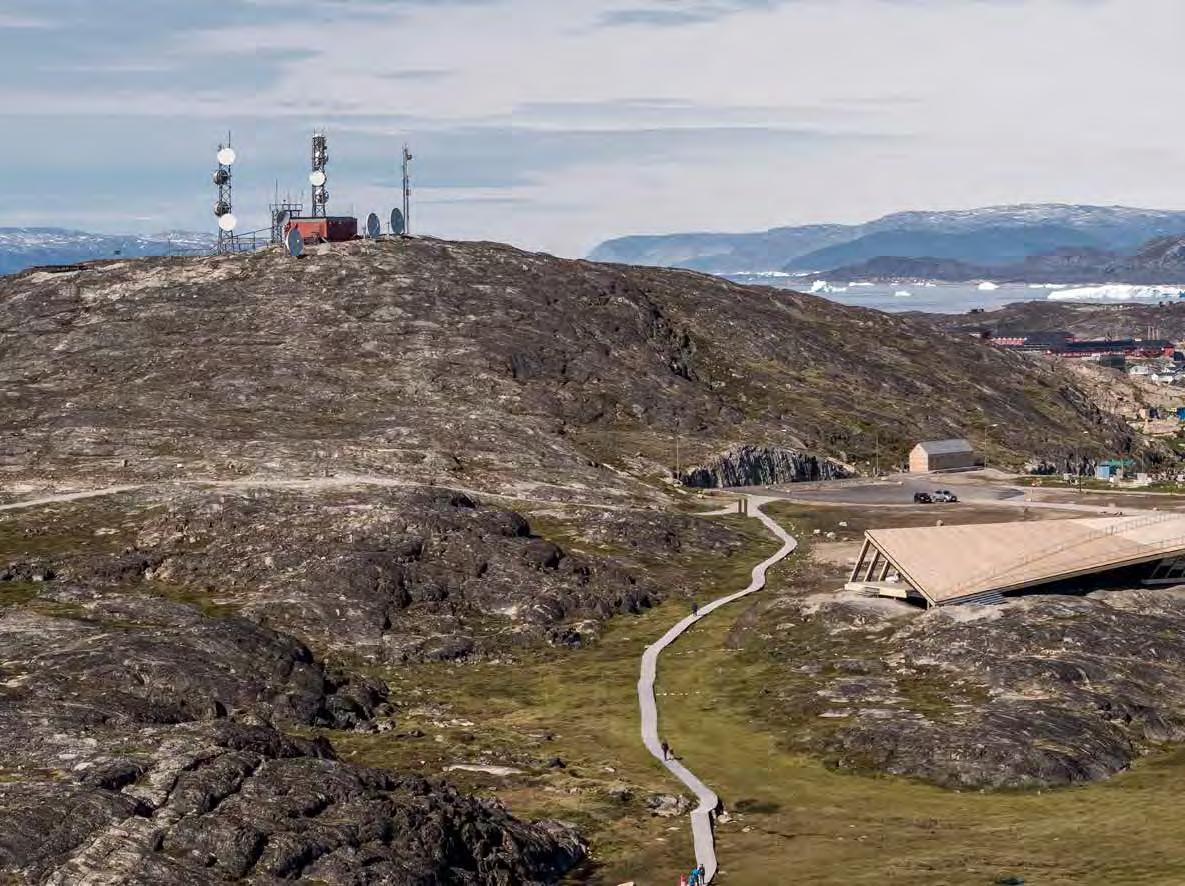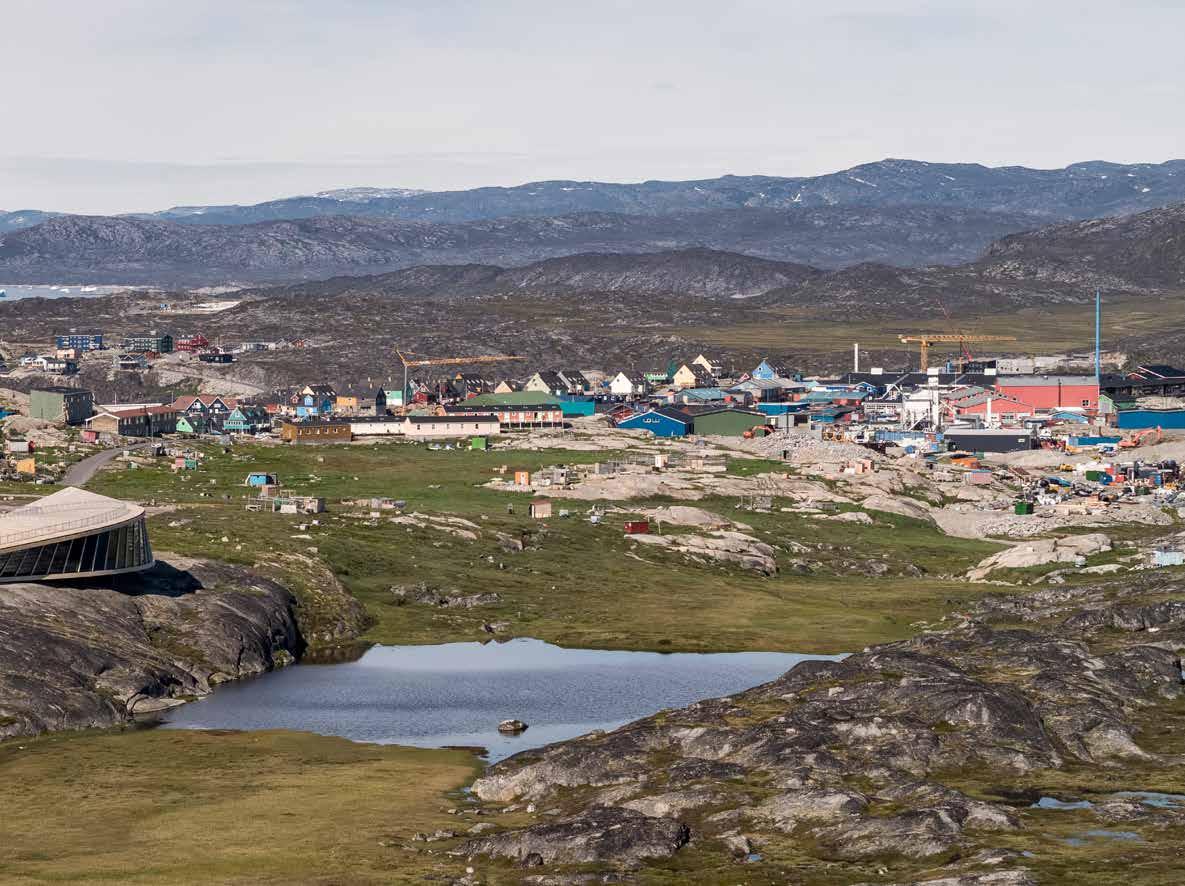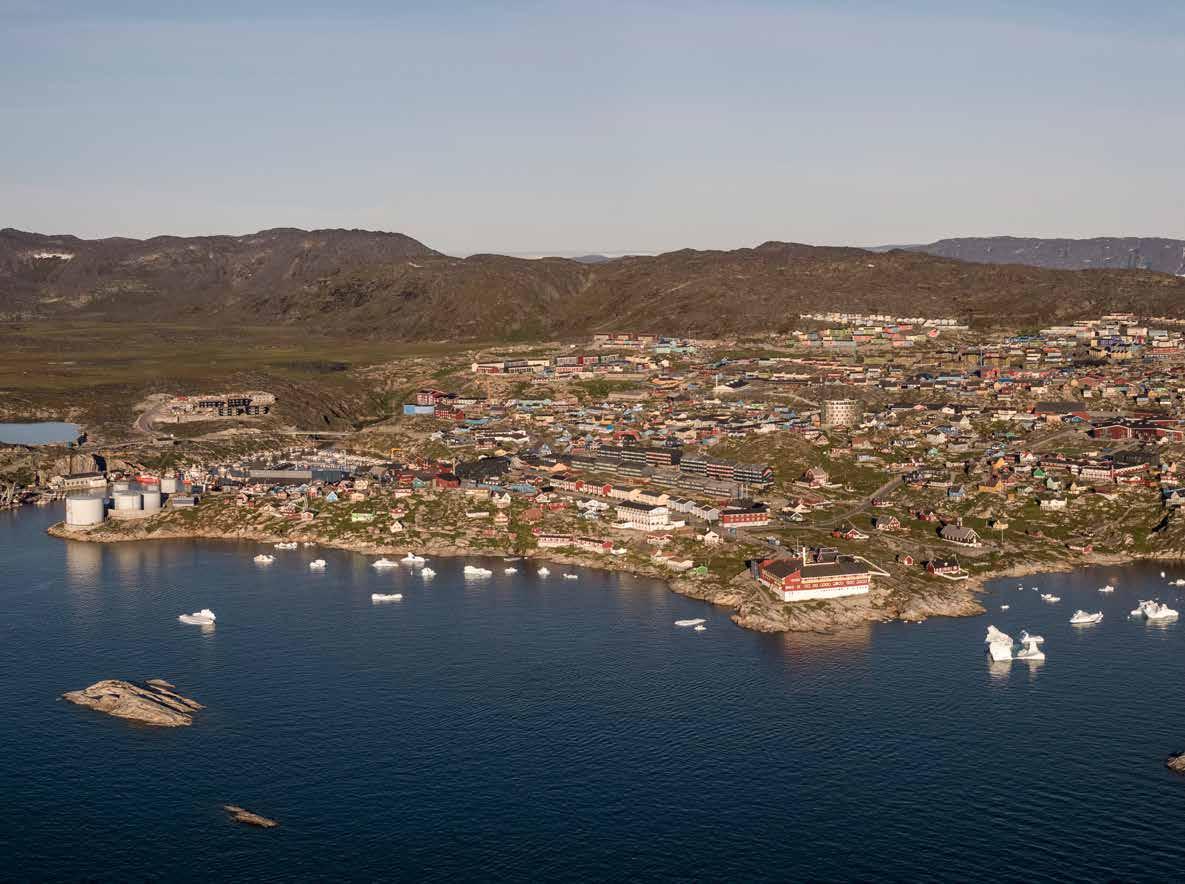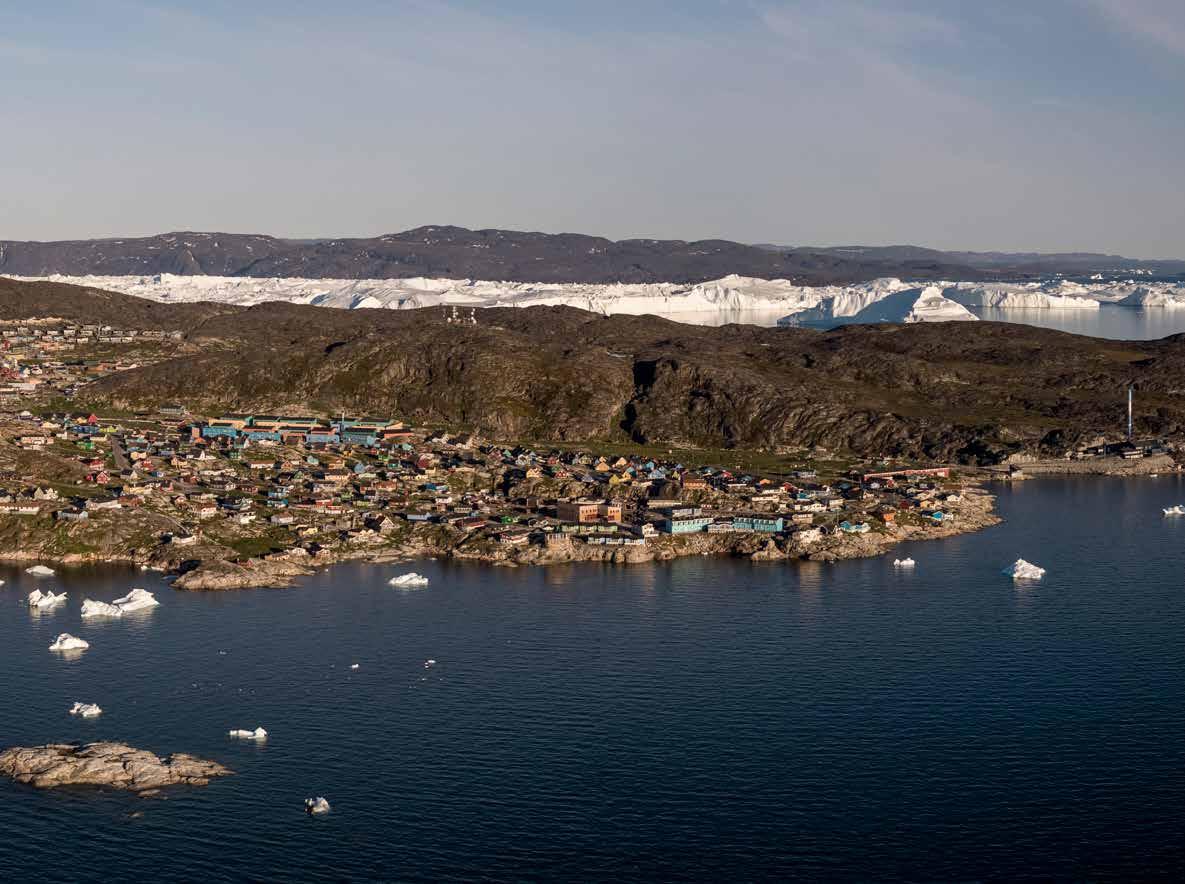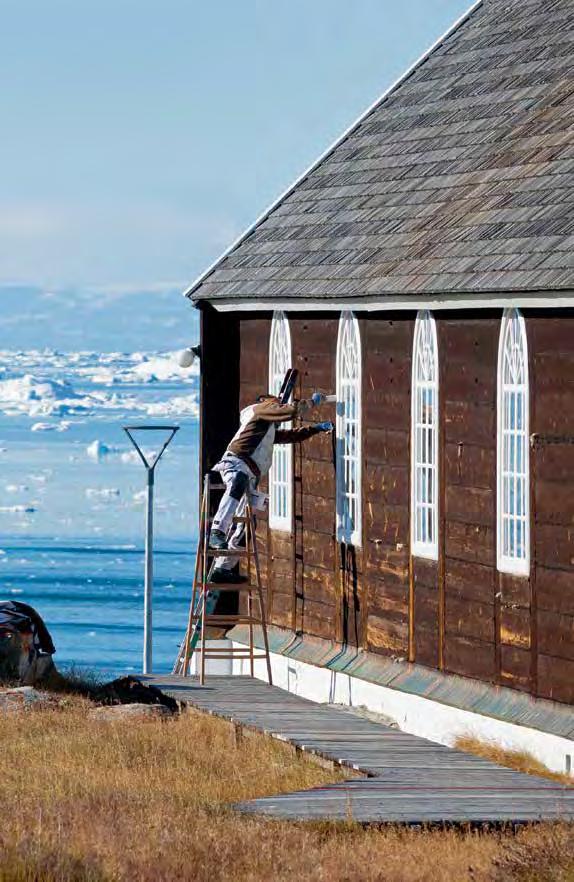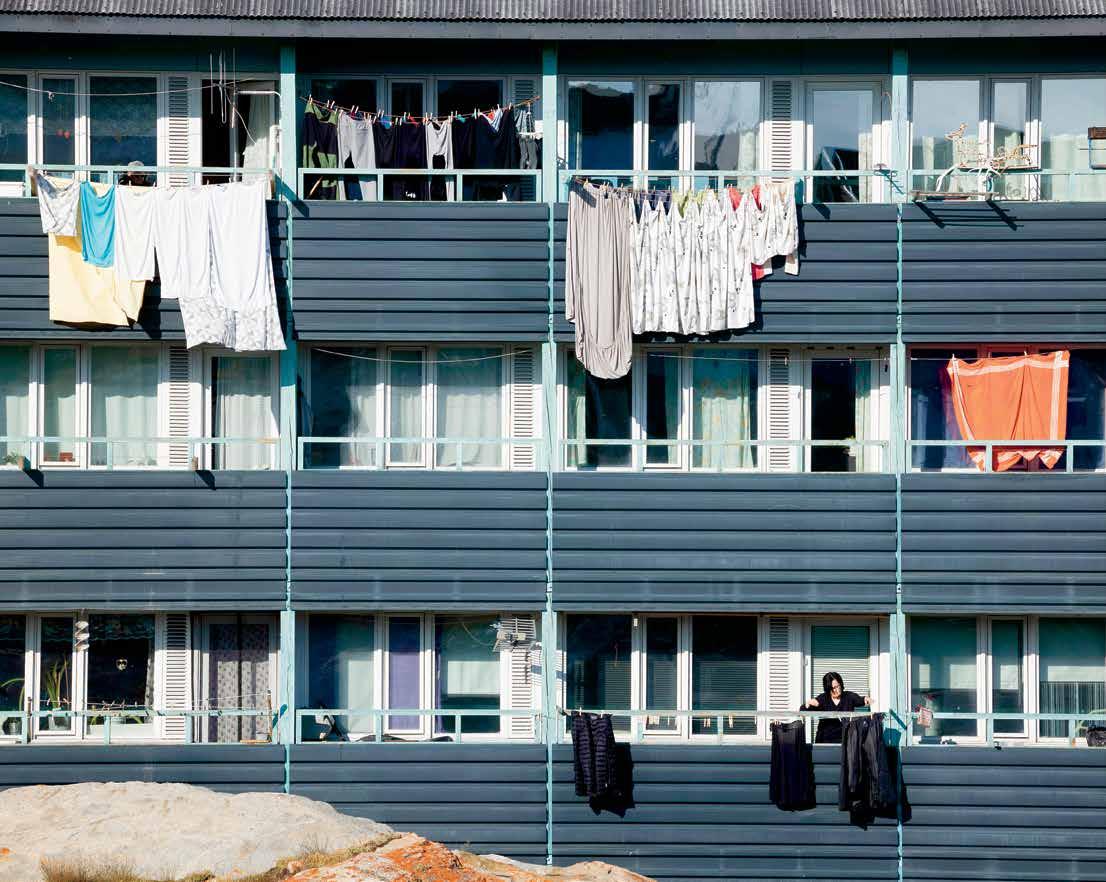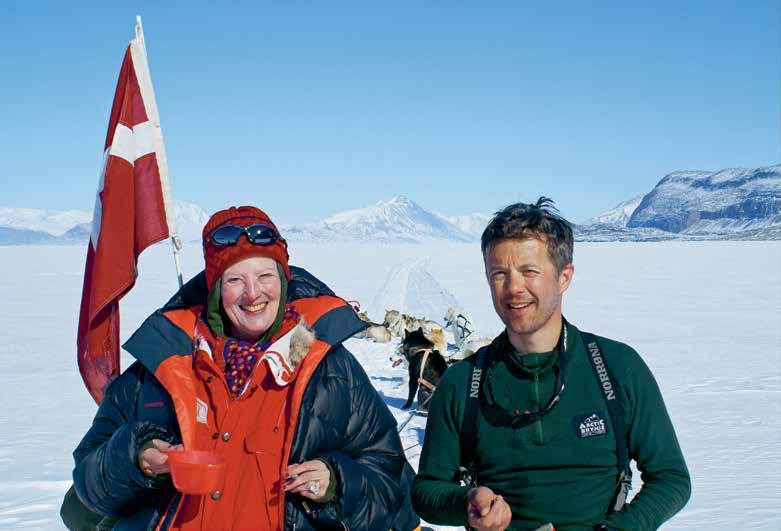
10 minute read
A unique experience to take home
because the land is so vast and the people are so few and so small compared to it.
‘When you come from Denmark, where a mountain is just a hill, where you can see whatever there is to see by standing on a molehill, and you come to Greenland, where you can see so incredibly far if the weather is clear. And where the mountains are so high. I’ve always loved walking on rocks and have done it a great deal. To see these big, towering landscape formations and the ice at the top and the snow and the ice floes and the icebergs on the water ... In clear weather, the colours are so unbelievably beautiful and the land is so vast that it defies comprehension,’ says the Queen, adding:
A LOVE PASSED ON Her Majesty has passed on her love of Greenland to her son Crown Prince Frederik. In 2000, he took part in the 2,800-kilometre expedition Sirius 2000, a four-month journey by dog sled through North Greenland. The Sirius Dog Sled Patrol is an elite Danish naval unit that conducts long-range reconnaissance patrols and enforces Danish sovereignty in the Arctic wilderness of northern and eastern Greenland.
‘That was tremendously important to him. To me, too, I must say. It gave him a chance to get much closer to
Greenland than any of us ever have,’ says the Queen, who was not worried about sending her son, the future king, on such a strenuous journey.
Later, the Crown Prince invited his mother on a trip along the east coast. They were able to borrow one of the Sirius sleds and dog teams. They were accompanied on this trip by a lady-in-waiting and one of the Crown Prince’s Sirius mates, but it was far from a luxury trip.
‘It was five days by dog sled in the most amazing, beautiful weather. It was magnificent. So vast. We spent two nights at Hvalrosodden, a former trapper’s station that is still used by Sirius. One night we spent in a tent on the ice. After another day’s journey, we reached Aalborghus, another former trapper’s station, with the most stunning location. Here we spent two nights,’ the Queen recalls.
Over the years, Queen Margrethe has been to almost every corner of the vast country. All the major towns and many of the settlements have enjoyed a royal visit. Every time, the world’s biggest island has impressed her.
‘Visiting the west coast, it really does seem vast. When you then get to the east coast, that seems even bigger. And the strange realization that there is not a single person living in North-East Greenland. When we were at
In 2011, Crown Prince Frederik invited his mother on a tour along Greenland’s east coast. They travelled by dog sled and spent the nights in tents and at former trappers’ stations.
Hvalrosodden, there were a few Sirius people nearby. A few days’ journey away lies Danmarkshavn. Apart from that, there is no one until you reach Station North or make it down to Scoresbysund. Then there are two “belfry owls” in Mestersvig, as they call the two men who keep an eye on the tower. That’s it. It’s a stunning experience. Thinking back on the people who have managed to live and survive there, especially in the old times before modern devices, that is really impressive.’
A SHARED HISTORY In Greenland, the relationship between Denmark and Greenland is a topic of open debate: whether Greenland should remain part of the realm, or whether it should be an independent nation. Underlying this, however, there is a strong desire to preserve a role for the royal house even in an independent Greenland. Queen Margrethe steers clear of that debate.
‘That is not for me to comment on. That is a rather more complicated matter. But obviously, it makes an impression on me and on the Crown Prince that we matter up there. The feeling is mutual – that much I can say,’ says the Queen, who also stresses Denmark and Greenland’s shared history:
Palle Jerimiassen, Mayor of Avannaata Kommunia
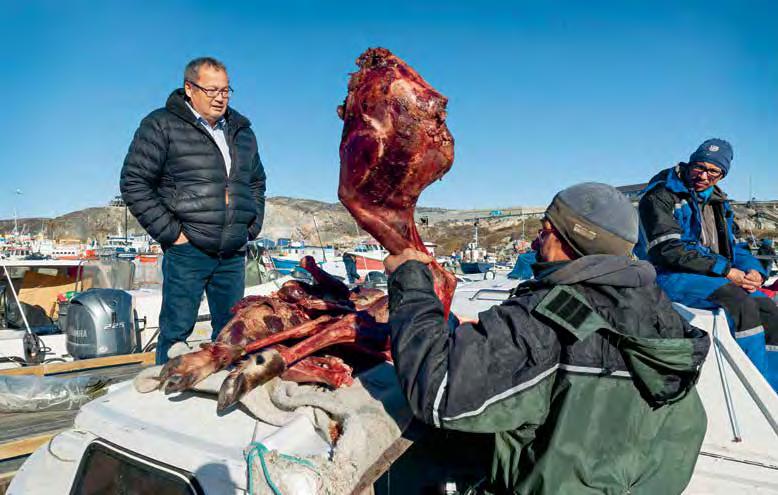
Mayor Palle Jerimiassen often walks along the harbour front, where fishermen and hunters land their daily catch.
Tourists visiting Ilulissat should take home a unique nature experience. And if someone would like to stay, they are welcome, as labour is in short supply, says Mayor Palle Jerimiassen. He grew up in Ilulissat and has been involved in shaping the town’s development from primarily a fishing community to Greenland’s number one tourist destination.
When Palle Jerimiassen grew up in Ilulissat, the town was divided into four parts. One where the fishermen lived, one where the hunters lived, one for other locals and, finally, the part where the Danes and the Greenlanders who worked for the Danish authorities lived. Palle Jerimiassen’s family lived in the latter part of town. ‘My father was a foreman in a factory, and my mother was a midwife at the hospital. This gave us certain privileges. I saw this clearly in school, since all the children of Ilulissat attended the same school. Fortunately, the town is no longer divided that way,’ says Palle Jerimiassen, who is now the Mayor of Avannaata Municipality. This inequality in itself would have been enough to inspire the young Palle Jerimiassen to go into politics. And it did. In addition, he was born and raised in a family of politicians, so politics was in his blood from a young age. ‘We have always debated politics in my family. My aunt was a government minister, my sister is a politician, and so is my nephew. So we have had many spirited discussions. While my mother was alive, she insisted that we not talk politics at the dinner table. We had to take a break until we were done eating. She had to impose that rule, since we often got pretty loud,’ Palle Jerimiassen says with a laugh. As a child, Palle Jerimiassen was a member of the student council in school and of various associations. At the age of 12 he became a sports coach, at the age of 14 he became an association board member for the first time, and as an adult he built a parallel career in associations and politics. He has been a member of the municipal council and served as chairman of the Greenland Handball Federation and the national association of Greenland’s municipalities.
IMMIGRANTS ARE WELCOME In 2017, he was elected Mayor of Avannaata Municipality, which includes four towns and twenty-three settlements in addition to the main town of Ilulissat. Avannaata is Greenland’s northernmost municipality and extends more than 1,600 kilometres from north to south. Geographically, the municipality covers an area slightly bigger than Spain, but it only has 11,000 inhabitants, or 0.02 per square kilometre.
The Mayor would like to see the population grow, as the area struggles with labour shortages. The growing tourism sector demands more restaurant and hotel staff. ‘We already have quite a few residents who come from China, Indonesia and other Asian countries. They pick up Greenlandic surprisingly fast – probably the languages have some of the same sounds – and they engage in local association activities. We are not worried about welcoming new citizens; that’s the way it has always been. In the past, we had many fishermen here from other countries,’ says Palle Jerimiassen. The Mayor welcomes the growth in tourism, although the visitor numbers did get slightly out of hand just prior to the COVID-19 crisis. At one point, all the hotels were full, and when 5,000 cruise passengers arrived on a single day, the balance tipped. ‘First of all, you lose the unique experience of being alone in this magnificent landscape when there are so many people here. Also, it was more than our infrastructure could handle. So we now want a system that only allows 1,000 cruise passengers per day in addition to our hotel guests. That ensures a good experience for everyone. We are also looking to extend the season, because we do want to welcome more tourists. Especially the hotel guests, because they stay longer and spend more money in our town,’ says the Mayor. That is why he is so pleased to have the Ilulissat Icefjord Centre as a new attraction in town. He has been deeply involved in the process, right from the initial planning stage, and in autumn 2021 he welcomed Her Majesty Queen Margrethe to Ilulissat. Among other points on her agenda, she came here to see the Icefjord Centre and its exhibition. He is proud that it proved possible to construct such a unique building and, not least, of the skilled local workers who were involved in the construction.
THE ICEFJORD IS THE AREA’S LIVELIHOOD The story of the Icefjord, the icebergs and climate change, which is told at the Icefjord Centre, plays a big role in the Mayor’s everyday life in many ways, since the town’s existence relies in large part on the fjord itself. Fishing and the fishery industry still make up one of the main livelihoods in Ilulissat, and the area around the port is bustling with activity. Historically, the main catch was large marine mammals, such as seals and whales; today, it is shrimps and Greenland halibut. Even though the quarry is new, many of the old fishing and hunting methods have been preserved and are being continuously developed. ‘One in three inhabitants in Ilulissat is either a fisherman or works in the fishery industry. The fjord is our source of food, so it’s tremendously important. When there are many icebergs, they act as a huge plug in the fjord that we need to look out for. And
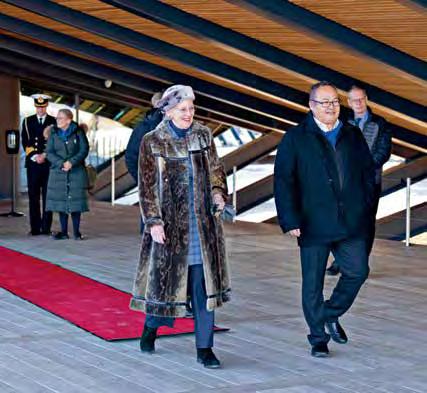
As mayor, Palle Jerimiassen has a wide portfolio of responsibilities. When Queen Margrethe visited Ilulissat, he had the honour of welcoming Her Majesty and showing her around.
when the plug breaks up, we have icebergs everywhere, and you have to avoid getting too close. Due to climate change, the sea ice actually disappeared from Ilulissat ten years ago. Now, our fishermen can go out all year, which is good for them. We have always adapted to nature. But I’m not blind to the fact that climate change is not a good thing, overall, and in fact it’s causing problems for some of our buildings in town, which are built on the permafrost. When it thaws, the buildings shift,’ says the Mayor. Although Palle Jerimiassen is not a professional fisherman himself, he does have a boat in the harbour close to the town hall. Whenever he can, he goes out on the fjord. Or he spends time with the old fishermen, who are always happy to talk about how things used to be or the size of the fish they caught. ‘We talk about everything and nothing. I’m not Palle any more, I am the Mayor, but down by the harbour they forget about that, and that’s great. The great thing about living in Greenland is that you have the freedom to do what you like. That is the essence of living in a society that is so deeply connected to nature. I have been around the world and seen how people treat their fellow man. Here, we have a sense of unity, whether you are rich or poor, regardless who you vote for. We talk to each other as one human being to another.’
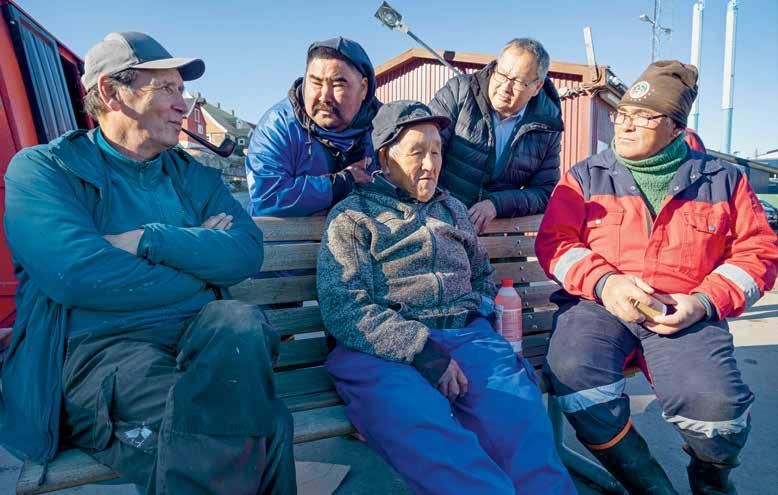
In Ilulissat harbour, nobody thinks about the fact that Palle Jerimiassen is the mayor. Here, he is simply Palle, and, like many others, he loves talking to the old fishermen and listening to their yarns.
